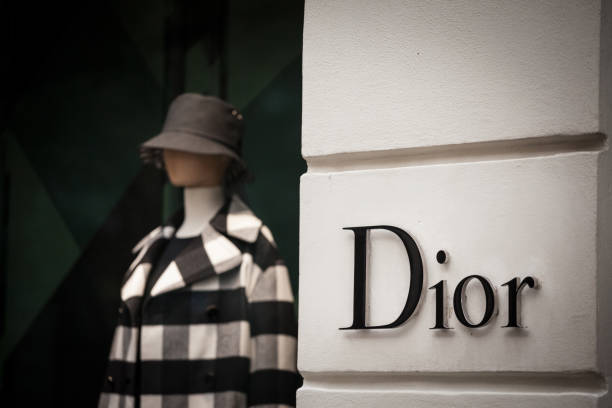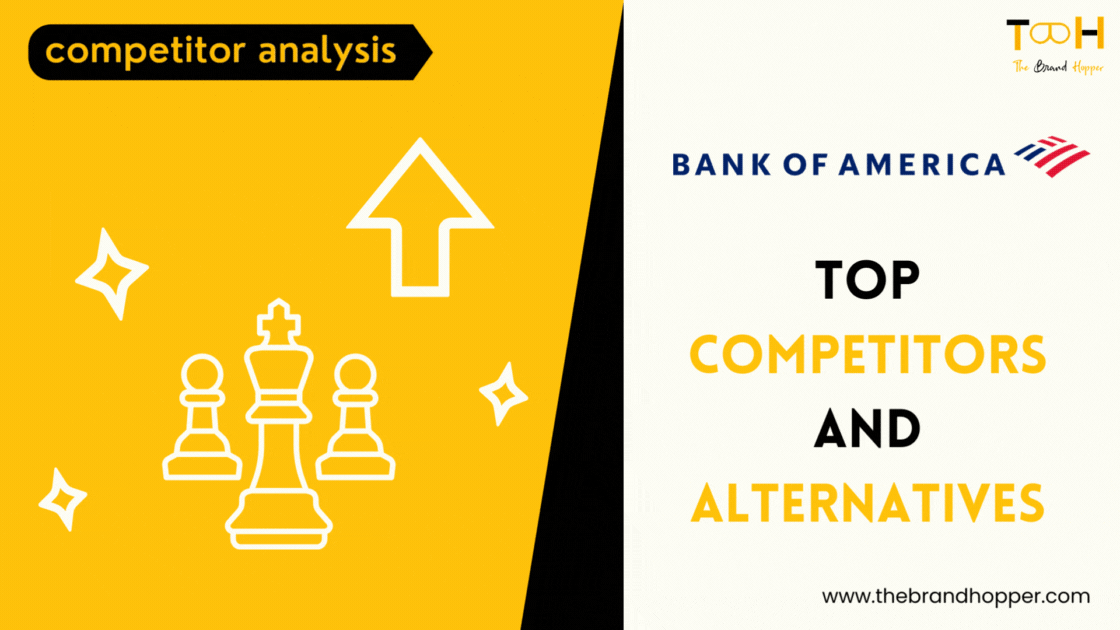Christian Dior is a renowned French fashion house that was established by its eponymous founder, Christian Dior, in 1946. The brand quickly gained international recognition and became synonymous with elegance, luxury, and innovative design. Dior’s introduction marked a significant turning point in post-World War II fashion and is often credited with revitalizing the industry.
Christian Dior was born in Granville, France, in 1905. He had a passion for art and initially aspired to become an architect. However, he eventually found his calling in fashion and began his career in the late 1920s, working for several Parisian fashion houses. Dior’s talent and creative vision were evident, and he rapidly ascended the ranks, gaining experience and refining his skills.

In 1946, following the end of World War II, Dior founded his eponymous fashion house in Paris. His debut collection, which was presented on February 12, 1947, was aptly named the “New Look.” The collection marked a departure from the boxy, utilitarian styles of wartime fashion and introduced a new silhouette characterized by cinched waists, voluminous skirts, and accentuated curves. The New Look revolutionized women’s fashion, emphasizing femininity, elegance, and luxury. It reintroduced a sense of opulence and extravagance that had been absent during the war years.
The “New Look” collection was an immediate success, capturing the attention of the fashion industry and clients worldwide. The hourglass figure it accentuated became a symbol of post-war optimism and a return to glamour. The collection’s impact was so profound that Carmel Snow, the editor-in-chief of Harper’s Bazaar, famously exclaimed, “It’s quite a revolution, dear Christian! Your dresses have such a new look!”
Following the success of his debut collection, Dior continued to innovate and expand his brand. He introduced various lines, including ready-to-wear collections, accessories, and fragrances. The brand’s signature pieces, such as the Bar suit—a tailored jacket with a nipped-in waist and a full, pleated skirt—became iconic symbols of Dior’s aesthetic.
Tragically, Christian Dior passed away in 1957 at the age of 52. However, his legacy continued under the leadership of talented designers who succeeded him, including Yves Saint Laurent, Marc Bohan, Gianfranco Ferré, John Galliano, Raf Simons, and Maria Grazia Chiuri, the brand’s current creative director.
Throughout its history, the Christian Dior brand has maintained its position as one of the world’s leading fashion houses, renowned for its exquisite craftsmanship, timeless designs, and luxurious materials. It has expanded its reach globally, with boutiques and presence in major fashion capitals worldwide. The brand’s influence extends beyond clothing, with successful lines in accessories, beauty, and fragrance.
Glorious History of Christian Dior
The glorious history of Christian Dior is characterized by its groundbreaking designs, influential creative directors, and its enduring legacy as one of the most iconic fashion houses in the world. Let’s delve into the key moments and milestones that have shaped the brand’s history.
The “New Look” Revolution (1947): Christian Dior’s debut collection in 1947, known as the “New Look,” was a pivotal moment in fashion history. It reintroduced a sense of femininity and luxury after the austerity of World War II. The collection featured cinched waists, voluminous skirts, and emphasized curves, creating an hourglass silhouette that became synonymous with the brand.
Global Recognition: Dior rapidly gained international recognition and opened boutiques in major fashion capitals, including Paris, London, and New York. The brand’s elegant designs and exceptional craftsmanship appealed to clients worldwide, cementing its status as a global fashion powerhouse.
Expansion and Diversification: Throughout the 1950s and 1960s, Dior expanded its offerings beyond haute couture. It introduced ready-to-wear collections, accessories, and fragrances. Dior’s accessories, such as handbags and shoes, became highly coveted and played a significant role in establishing the brand as a luxury lifestyle label.
Succession of Creative Directors: After Christian Dior’s untimely death in 1957, the brand experienced a series of talented creative directors who left their mark on the house.
- Yves Saint Laurent (1957-1960): At just 21 years old, Saint Laurent took over as creative director and introduced youthful, modern designs that pushed the boundaries of traditional elegance.
- Marc Bohan (1960-1989): Bohan’s tenure brought a sense of refinement and timeless sophistication to Dior. He created elegant and versatile designs that catered to the changing fashion landscape.
- Gianfranco Ferré (1989-1996): Ferré injected a sense of architectural precision into his designs, blending classic Dior elements with contemporary aesthetics.
- John Galliano (1996-2011): Galliano’s tenure was marked by his theatrical and flamboyant approach. His designs showcased extravagant details, historical references, and a unique fusion of art and fashion.
- Raf Simons (2012-2015): Simons’ minimalist and modern vision revitalized Dior. He introduced a fresh and clean aesthetic, combining femininity with a contemporary edge.
- Maria Grazia Chiuri (2016-present): Chiuri became the brand’s first female creative director. Her designs celebrate feminism, diversity, and activism, infusing a sense of empowerment into the collections.
Iconic Designs and Symbols: Over the years, Dior has introduced several iconic designs and symbols that have become synonymous with the brand. These include the Bar suit, Lady Dior handbag, J’adore fragrance, Diorissimo print, and the iconic “CD” logo.
Legacy and Influence: Christian Dior’s legacy is marked by its profound influence on fashion and popular culture. The brand has dressed numerous celebrities, royalty, and influential figures. Dior’s designs have been exhibited in museums worldwide, and the brand’s influence extends beyond fashion, permeating art, photography, and film.
Today, Christian Dior continues to be at the forefront of luxury fashion, combining heritage and innovation. The brand’s unwavering commitment to craftsmanship, its ability to evolve with the times, and its ability to capture the essence of elegance and femininity have ensured its enduring legacy and position as a true icon in the fashion industry.
Why is Christian Dior so successful in Luxury world?
Christian Dior has achieved remarkable success in the luxury world due to several key factors that have contributed to its enduring reputation and position as one of the leading fashion houses. Here are some reasons for the brand’s success:
Visionary Founder and Creative Direction: Christian Dior himself was a visionary designer who introduced the iconic “New Look” and revolutionized post-war fashion. His innovative designs, attention to detail, and commitment to elegance set the foundation for the brand’s success. The subsequent creative directors who have led the brand have continued to infuse their unique visions while staying true to Dior’s heritage, ensuring the brand remains relevant and forward-thinking.
Timeless Elegance and Couture Craftsmanship: Dior is renowned for its timeless elegance and impeccable craftsmanship. The brand consistently delivers collections that exude sophistication and luxury. The couture techniques and attention to detail employed by the brand’s skilled artisans ensure that each piece reflects the highest standards of quality and craftsmanship, making Dior garments highly sought after by luxury consumers.
Iconic Designs and Symbols: Dior has created several iconic designs and symbols that have become synonymous with the brand. From the Bar suit to the Lady Dior handbag and the J’adore fragrance, these symbols have captured the imagination of fashion enthusiasts and become enduring symbols of luxury and sophistication. These iconic designs not only generate brand recognition but also contribute to the brand’s longevity and desirability.
Global Presence and Market Penetration: Dior has strategically established a strong global presence, with boutiques in major fashion capitals and a widespread distribution network. By expanding its reach across various regions and markets, Dior has been able to tap into a diverse customer base and cater to the demands of luxury consumers worldwide. The brand’s ability to adapt to different cultures and preferences while maintaining its distinct identity has played a crucial role in its success.
Brand Heritage and Legacy: Christian Dior’s rich heritage and legacy have contributed significantly to the brand’s success. The history, traditions, and values associated with the brand evoke a sense of prestige and exclusivity. Dior’s legacy has been nurtured and celebrated through exhibitions, collaborations, and partnerships, reinforcing the brand’s authority in the luxury world and enhancing its appeal to discerning consumers.
Strategic Marketing and Branding: Dior has employed effective marketing and branding strategies to enhance its visibility and desirability. The brand collaborates with influential figures from various industries, including film, art, and music, to create captivating campaigns and collaborations that resonate with its target audience. Additionally, Dior’s investment in digital platforms and social media has allowed it to engage with a wider audience and stay relevant in the rapidly evolving luxury landscape.
Diversification and Lifestyle Offerings: Dior has successfully diversified its product offerings beyond fashion, expanding into accessories, beauty, and fragrance. This diversification has allowed the brand to cater to a broader range of consumer preferences and lifestyles. Dior’s ability to provide a complete luxury experience, from clothing to accessories, fragrance, and beauty, has further solidified its position in the luxury market.
In conclusion, Christian Dior’s success in the luxury world can be attributed to a combination of visionary leadership, timeless elegance, superior craftsmanship, iconic designs, global market penetration, brand heritage, strategic marketing, and diversification. These factors have helped Dior establish itself as a symbol of luxury, ensuring its enduring appeal to discerning consumers and its continued success in the luxury industry.
Marketing Strategies of Christian Dior
Christian Dior employs various marketing strategies to maintain its prominence and desirability in the luxury fashion market. Here are some key marketing strategies that Dior has implemented:
Brand Image and Positioning:
Dior’s brand image is associated with luxury, elegance, sophistication, and timeless style. The brand is known for its haute couture, ready-to-wear collections, accessories, fragrances, and cosmetics.
Dior’s brand strategy revolves around its French origin and heritage dating back to 1947, as well as its commitment to creativity and artistic expression. Dior’s distinctive and innovative design aesthetics are characterized by bags that blend classic elements with modern touches.
Dior’s brand positioning is synonymous with elegance, luxury, and femininity. The brand positions itself as a symbol of timeless sophistication and couture craftsmanship.
Influential Collaborations:
From legendary artists to rising stars, Dior knows the power of impactful collaborations. They strategically partner with individuals and brands to amplify their reach, tap into new audiences, and inject fresh perspectives into their designs. Let’s explore how these partnerships elevate their brand:
Creative Crossovers: In the 1930s, collaborating with artists like Elsa Schiaparelli and Max Ernst infused artistry and imagination into Dior’s DNA, setting them apart. In 2021, partnering with musician Travis Scott for a menswear collection broke boundaries, attracting a new generation.
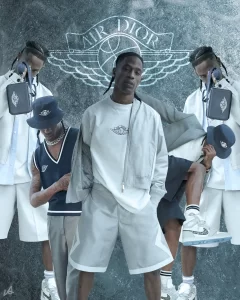
Global Resonance: Dior embraces cultural diversity. Collaborations with Indian artists Madhvi and Manu Parekh and the Chanakya Atelier highlight India’s rich heritage, resonating with a global audience. This expands their reach and fosters cultural exchange.
Unexpected Twists: The Dior x Birkenstock collaboration in 2022 took the fashion world by surprise, showcasing Dior’s ability to reimagine classic designs and cater to evolving trends. This keeps their brand fresh and relevant.
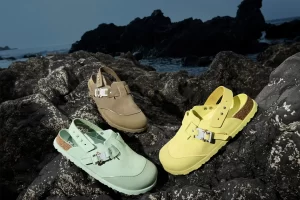
Beyond Fashion: Collaborations extend beyond clothing. Partnering with Kim Jones for the Gran Turismo World Series in 2023 demonstrates Dior’s understanding of gaming culture and its potential. This strategic move expands their influence beyond traditional fashion circles.
By strategically collaborating with diverse individuals and brands, Dior goes beyond just creating clothes; they create cultural moments. They push boundaries, stay relevant, and connect with audiences on a deeper level, solidifying their position as a fashion powerhouse
Runway Shows and Fashion Events:
Forget just showcasing clothes; Dior’s runway shows and events are full-blown spectacles, designed to captivate audiences and generate buzz.
Immersive Experiences: Dior’s 2023 autumn/winter show wasn’t just a catwalk; it was an art installation. The floating floral display by Joana Vasconcelos captivated attendees and set the tone for a season filled with wonder. This immersive experience goes beyond showcasing clothes; it creates a memorable moment that generates online chatter and reinforces Dior’s association with innovation and artistry.
Global Storytelling: Fashion transcends borders, and Dior understands that. Their 2023 pre-fall collection, presented in Mumbai, was a collaboration with an Indian atelier. This showcased cultural appreciation and embraced diversity, resonating with a global audience and strengthening their brand image as inclusive and culturally aware.
A Legacy on Display: La Galerie Dior isn’t just a museum; it’s a testament to the brand’s heritage. Showcasing exquisite pieces in a beautifully curated space allows Dior to connect with fashion enthusiasts and educate new generations about their rich history. This fosters brand loyalty and positions them as a leader with a timeless legacy.
By going beyond traditional runway shows, Dior creates immersive experiences, embraces global narratives, and celebrates their heritage. These strategic steps turn fashion events into powerful marketing tools, solidifying their position as a brand that pushes boundaries and captures hearts, one captivating spectacle at a time.
Iconic Brand Ambassadors:
Dior puts a face (or several) to their name, leveraging A-list ambassadors to amplify their message and connect with diverse audiences.
Dior’s roster is a map of international stars. From K-pop groups like TXT to Hollywood actors like Robert Pattinson, they cater to specific demographics while maintaining global recognition. This multilingual approach expands their reach and resonates with international audiences.
Dior goes beyond just looks. Appointing athletes like Kylian Mbappé highlights their association with excellence and achievement, while choosing environmentally conscious stars like Marion Cotillard aligns them with important values, resonating with conscious consumers.

While established stars like Charlize Theron bring brand recognition, newcomers like Rachel Zegler inject youthful energy and appeal to a new generation. This blend of experience and novelty ensures Dior stays relevant and attracts diverse demographics.
By carefully selecting ambassadors who embody their brand values and resonate with specific audiences, Dior creates a powerful marketing force. These stars become walking advertisements, amplifying the brand’s message and connecting with fans on a deeper level. It’s a win-win: celebrities gain prestige, while Dior shines brighter than ever.
Strategic Partnerships and Pop-Up Experiences:
Dior creates experiences. They leverage strategic partnerships and pop-up events to expand their reach, engage new audiences, and leave a lasting impression.
Partnering for Power: Dior doesn’t operate in a vacuum. They collaborate with trusted luxury retailers and online platforms like Sephora and Nordstrom, reaching new customers and leveraging established trust. This expands their access to diverse markets and ensures their products are readily available.
Pop-Ups with Personality: Forget generic stores; Dior’s pop-ups are immersive experiences that capture the essence of each location. The Villa d’Este pop-up in Como reflects the Fall 2023 line, while the London pop-up channels the collection’s collegiate inspiration with mid-century furniture. These unique spaces go beyond selling; they create memorable moments that solidify brand love and generate buzz.
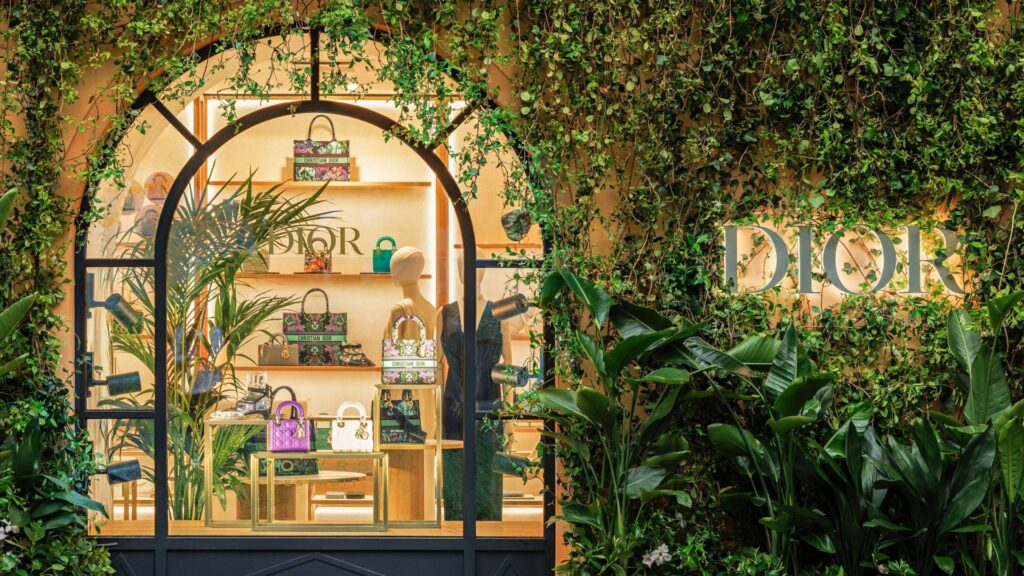
Beyond Boutiques, Building Connections: Dior understands that convenience matters. Partnering with duty-free stores makes their products accessible to travelers, expanding their global reach. Additionally, their own online platform allows for seamless shopping, catering to the digital-first generation. This omnichannel approach ensures everyone can experience the Dior magic, wherever they are.
By strategically partnering with established platforms, creating captivating pop-ups, and offering convenient access, Dior goes beyond just selling fashion. They build connections, create buzz, and solidify their position as a brand that offers more than just products; they offer an experience.
In summary, Christian Dior’s marketing strategies revolve around its distinct brand image, influential collaborations, runway shows, brand ambassadors, digital marketing, strategic partnerships, and experiential marketing. By combining these strategies, Dior effectively communicates its brand values, creates excitement, engages consumers, and maintains its position as a leading luxury fashion house.
Financials of Christian Dior
Here are some details about the financials of Christian Dior over the years:
Revenue
Christian Dior’s revenue has been growing steadily in recent years. In 2022, the company’s revenue was €79.184 billion, which is an increase of 7.5% from the previous year. The growth in revenue is due to a number of factors, including:
- The expansion of the company’s product portfolio.
- The opening of new stores in key markets.
- The growth of e-commerce sales.
Profit
Christian Dior’s profit has also been growing steadily in recent years. In 2022, the company’s profit was €5.797 billion, which is an increase of 10.2% from the previous year. The growth in profit is due to the growth in revenue and the company’s cost-cutting measures.
Debt
Christian Dior’s debt has been declining in recent years. As of December 31, 2022, the company’s debt was €2.5 billion, which is a decline of 10.2% from the previous year. The decline in debt is due to the company’s strong cash flow and its debt repayments.
Liquidity
Christian Dior’s liquidity is strong. As of December 31, 2022, the company had cash and cash equivalents of €4.5 billion. This is more than enough to cover its short-term debt.
Outlook
The outlook for Christian Dior is positive. The company is well-positioned to continue to grow in the future. The company has a strong brand name, a diversified product portfolio, and a global presence.
However, there are some challenges that Christian Dior faces, such as the increasing competition from rivals, such as LVMH and Kering. The company will need to continue to innovate and invest in its brand in order to remain competitive.
Overall, the financials of Christian Dior are strong. The company is well-positioned to continue to grow in the future.
Here is a table showing the financials of Christian Dior over the years:
| Year | Revenue | Profit | Debt | Liquidity |
|---|---|---|---|---|
| 2022 | €79.184 billion | €5.797 billion | €2.5 billion | €4.5 billion |
| 2021 | €73.432 billion | €5.265 billion | €2.75 billion | €4.2 billion |
| 2020 | €68.679 billion | €4.733 billion | €3.0 billion | €3.7 billion |
| 2019 | €65.926 billion | €4.201 billion | €3.25 billion | €3.5 billion |
| 2018 | €61.173 billion | €3.669 billion | €3.5 billion | €3.2 billion |
As you can see, Christian Dior’s financials have been strong in recent years. The company has been growing its revenue and profit, and it has been able to reduce its debt. The company’s liquidity is also strong. This suggests that Christian Dior is well-positioned to continue to grow in the future.
Competitors of Christian Dior
Christian Dior faces competition from several notable luxury fashion brands that operate in a similar market segment. Here are some of Dior’s key competitors:
Chanel: Chanel is a French luxury fashion house known for its timeless elegance, iconic designs, and high-quality craftsmanship. Like Dior, Chanel has a rich heritage and offers a wide range of products, including haute couture, ready-to-wear, accessories, and fragrance. Chanel’s brand image is synonymous with sophistication and classic femininity. The brand’s enduring popularity and global presence make it a significant competitor to Dior.
Also Read: The Timeless Elegance of Chanel: Exploring It’s Iconic Legacy
Gucci: Gucci is an Italian luxury brand that has experienced a strong resurgence in recent years. Known for its bold and eclectic designs, Gucci appeals to a younger, fashion-forward audience. The brand’s distinctive aesthetic, innovative marketing campaigns, and collaborations with artists and musicians have contributed to its popularity and relevance. Gucci’s success and ability to tap into the streetwear and logomania trends have positioned it as a formidable competitor to Dior.
Also Read: Gucci Marketing Strategies: How the Brand Continues to Slay
Louis Vuitton: Louis Vuitton is a French luxury fashion house that specializes in luxury accessories, including handbags, luggage, and leather goods. The brand is renowned for its monogram pattern, high-quality craftsmanship, and travel heritage. Louis Vuitton’s ability to seamlessly blend tradition with contemporary styles has earned it a loyal customer base and global recognition. The brand’s strength in the accessories category makes it a direct competitor to Dior in this segment.
Also Read: Louis Vuitton- Success Factors Of The Top Luxury Brand
Prada: Prada is an Italian luxury fashion brand known for its minimalist yet avant-garde designs. Prada’s focus on innovation, experimentation, and unconventional materials has set it apart in the luxury fashion landscape. The brand’s ability to combine intellectual concepts with luxury craftsmanship has attracted a discerning clientele. Prada’s unique positioning and emphasis on contemporary aesthetics make it a competitor to Dior, particularly in the realm of cutting-edge fashion.
Hermès: Hermès is a French luxury brand that is synonymous with craftsmanship, heritage, and exclusivity. Known for its iconic Birkin and Kelly bags, Hermès epitomizes timeless luxury and refined elegance. The brand’s dedication to handcrafted excellence and its emphasis on heritage and tradition have contributed to its reputation as a symbol of luxury. Hermès’ strong presence in the accessories and leather goods market makes it a competitor to Dior, particularly in the high-end luxury segment.
Givenchy: Givenchy is a French luxury fashion brand that offers a range of products, including haute couture, ready-to-wear, accessories, and fragrance. Givenchy is known for its sophisticated and glamorous designs, often characterized by clean lines and a blend of modernity and classicism. The brand’s strong celebrity following and association with high-profile events, such as the Met Gala, contribute to its visibility and desirability. Givenchy’s similar positioning and aesthetic make it a competitor to Dior in the luxury fashion market.
It’s important to note that competition in the luxury fashion industry is multifaceted, and brands may compete on different levels, including product categories, target markets, brand positioning, and unique selling propositions. While these are some notable competitors to Christian Dior, the luxury fashion landscape is dynamic, with emerging brands and evolving trends constantly reshaping the competitive landscape.
To read more content like this, subscribe to our newsletter
